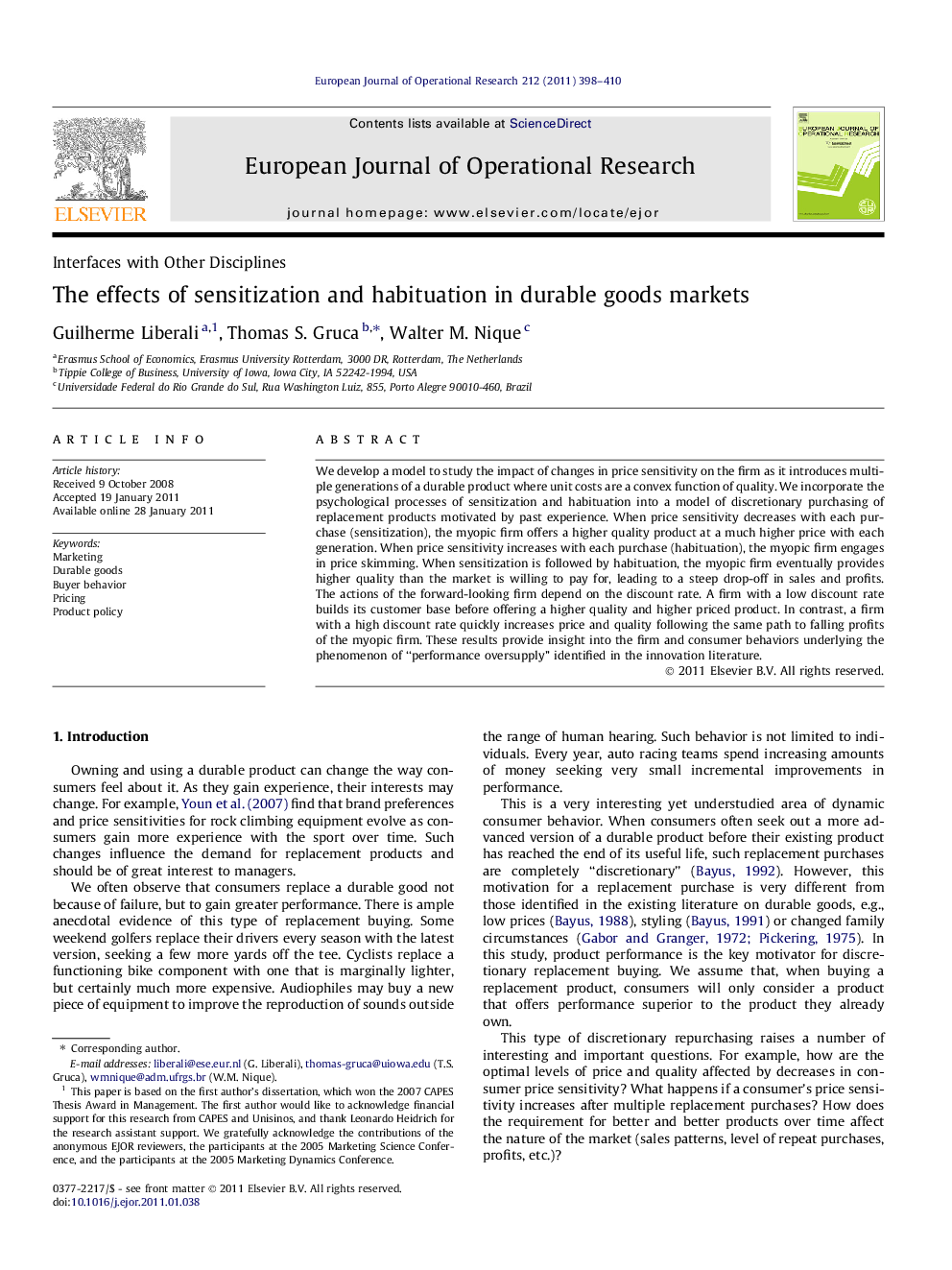| Article ID | Journal | Published Year | Pages | File Type |
|---|---|---|---|---|
| 477042 | European Journal of Operational Research | 2011 | 13 Pages |
We develop a model to study the impact of changes in price sensitivity on the firm as it introduces multiple generations of a durable product where unit costs are a convex function of quality. We incorporate the psychological processes of sensitization and habituation into a model of discretionary purchasing of replacement products motivated by past experience. When price sensitivity decreases with each purchase (sensitization), the myopic firm offers a higher quality product at a much higher price with each generation. When price sensitivity increases with each purchase (habituation), the myopic firm engages in price skimming. When sensitization is followed by habituation, the myopic firm eventually provides higher quality than the market is willing to pay for, leading to a steep drop-off in sales and profits. The actions of the forward-looking firm depend on the discount rate. A firm with a low discount rate builds its customer base before offering a higher quality and higher priced product. In contrast, a firm with a high discount rate quickly increases price and quality following the same path to falling profits of the myopic firm. These results provide insight into the firm and consumer behaviors underlying the phenomenon of “performance oversupply” identified in the innovation literature.
